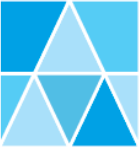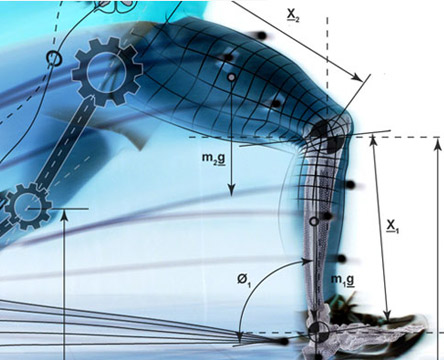In September 2018, Chris Roderick wrote an article describing the challenges he faced when he began developing an Open Educational Resources textbook for the course “Physics for Physiotherapy Technology”. Members of the Academic Matters editorial team sat down with Chris on November 4, 2019, to learn more about how creating his new textbook fits into his experience teaching physics in a technical program.
When did you start teaching the course Physics for Physiotherapy Technology and how did you become involved?
I first taught the course in the fall of 2014. The Physiotherapy Technology Program started in 2012 and my colleague Nadim Boukhira, who had worked with Mylène Saucier [a former coordinator of the Physiotherapy program] to develop the physics portion of the program grid, taught the course during the first two years. I had always been looking for bio-mechanical examples to illustrate physics concepts because half the students in the Science program are in the Health profile and most of the applications discussed in physics textbooks are related to engineering. When the possibility of teaching this course opened up, I saw it as an opportunity to develop some bio-mechanical examples.
What is it like teaching Physics outside the Science program, where the focus is on specific applications?
The way I see it, it is a natural part of what we should be doing as teachers. First of all, everyone should know physics because it’s how the world works and so the more people I can help to understand that, the better. But it’s also nice to be teaching non-science students because it forces me to focus more on the conceptual end of how things work rather than on the mathematical, theoretical end of things. By pushing me to think about and teach physics differently, this course helps improve my overall pedagogy.
By pushing me to think about and teach physics differently, this course helps improve my overall pedagogy.
Some teachers might be reluctant to adjust the discipline content and their teaching approach to serve a program’s needs.
If you get hung up on the idea that serving someone’s needs is not what you do, then you’ve got a problem. You should have no problem serving somebody. That’s what teachers are here to do, regardless of the level at which they are teaching. Teachers should help students understand their discipline. The students in technical programs may not be going to university and they may not become mathematicians, physicists or engineers, but that is not the point. In my case, there are students who should know some physics and I’m going to help them do that. I’m going to tailor my pedagogy to help them understand physics in their context.
I’m going to tailor my pedagogy to help them understand physics in their context.
What support did you receive from your department and from the Physiotherapy program to develop “Physics for Physiotherapy Technology”?
As I mentioned earlier, Nadim Boukhira worked with Mylène Saucier to develop the basic orientations and materials and he passed that package to me when I picked up the course in 2014. That’s always been the case when we have courses that aren’t within our core discipline, within the Sciences, and where the specific content, techniques or activities must be developed and tailored.
Working with the Physics lab technicians over the next three years allowed me to figure out what labs could be done, what equipment was needed and what we needed to improve. We changed a few of the labs and added two new ones.
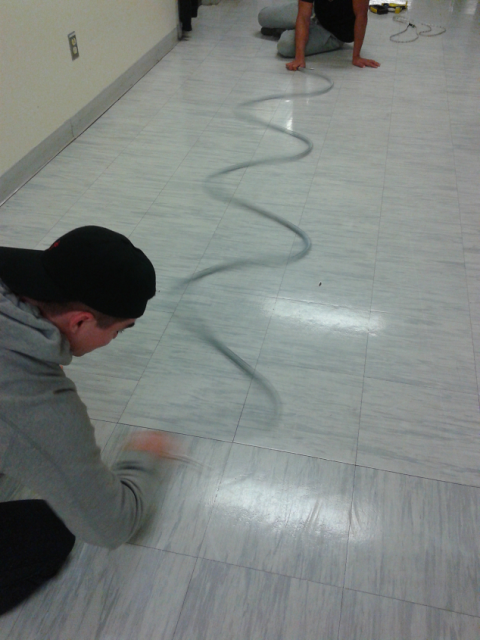
But the biggest challenge has been how to provide learning resources in the form of a textbook and practice problems. Physics textbooks are geared to science students, and the presentation and treatment of topics follow that approach, making them unsuitable for the applied life sciences. Having already developed conceptual activities and practice exercises for the course, I set myself the more ambitious task of writing a textbook, which I started work on last year. In this undertaking, I received considerable support from the Physics department, which made a strong, convincing case for me to receive release this fall so that I could continue creating an on-line textbook in a more structured and thorough way. I am grateful for that support and the support of my dean. Some of the materials I developed for this course have already found their way back into the Mechanics course in the Science program.
Members of the Physiotherapy program itself have been very open to discussion and I have continually encouraged them to tell me what their students need to know. In the first few years, the pedagogical approach I used – how I think about physics – was quite far apart from what the students were actually doing in their physiotherapy labs. Through discussions with the Physiotherapy chairs and other instructors, I have been able to develop a better idea of how the students will apply what they learn in my course to their other courses and of what I need to do to make better linkages. The course is not there yet, but those discussions have permitted me to develop the concepts and activities that will help the students get closer to what they need.
In what ways do you feel that the course is missing what the students need?
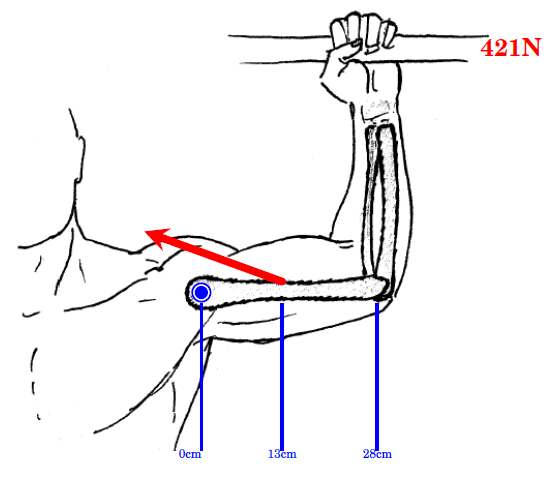
I’m still too formal in my presentations in the sense of that I am much more structured and scientific. Although I am developing more conceptual and qualitative reasoning skills for the students, at the end of the day it always comes down to, “well, you put numbers in the calculator.” I’m trying to get away from that but it’s very difficult to do physics in a way that can be evaluated that doesn’t involve some kind of quantitative aspect, if you want to get an objective evaluation of how well they have understood the material. I’m getting closer year by year and this semester has been a great help in developing conceptual and qualitative material.
The biggest thing is not to be afraid to ask dumb questions. There will always be a gap in the way two disciplines from two different programs see a common problem. What is important is that people should not be afraid to engage in a dialogue and to be wrong the first few times a discussion is launched. There is a space where the program and the contributing discipline can co-habit, rather than existing in two boxes where there is no communication. Teachers should never relent in trying to negotiate, to find that common space, even if it takes several semesters.
The task of writing a textbook is a major undertaking, requiring knowledge of subject matter and pedagogy. Has your participation in various communities of practice, for example active learning, helped prepare you for this project?
Part of the reason why I wanted to create the textbook was so that I could spend less time lecturing in class and more time having students work on exercises. Many of the students have low-level mathematics from high school and do not have a science background, and as a result they struggle with this material, even in a conceptual way.
There is a large difference between understanding the human body and being able to talk about it quantitatively. The mathematical skills that describe it, including basic geometry and spatial reasoning, are very far away from where students start. As a result, the more time I can see them developing those skills, the more time I have to bring them towards understanding and objectifying the human form. In the Physiotherapy program, students are dealing with the patient as a human being but they also need to think about the body as a mechanical object.
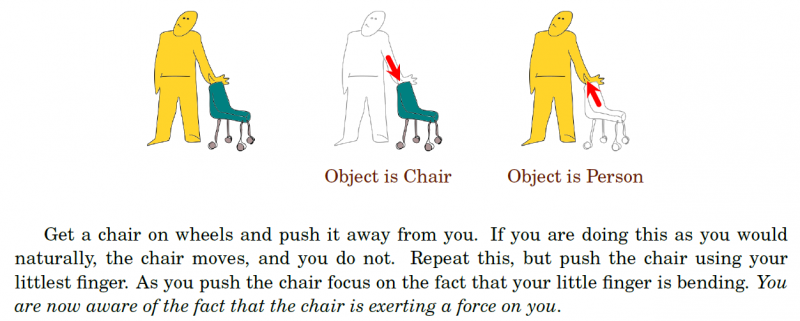
Students need to understand how forces and stresses affect the material in the body and to use the correct terminology to describe those processes. The more they are engaged in action, doing things, the more likely they are to succeed in this course and be prepared for later courses.
From the active learning perspective, I am hoping, eventually, to be able to flip the classroom so that the students will read the textbook on their own and then bring their questions to class where we can engage the concepts and material through problems and exercises. However, the textbook is incomplete and I still have to lecture some of the time.
What are your goals in having an open-source textbook and when do you expect to finish it?
I am still in the “alpha” stage where I am putting things together. When I get to the “beta” stage, I would like to distribute the textbook to the other colleges that are offering Physiotherapy Technology and get their feedback. I am not sure how adaptable it will be to other colleges, however, because the way they have integrated Physics into their programs is quite different.
As far as when the textbook will be finished, I have to admit this project is a major undertaking. I am not working with a publisher and I gather and structure my own material myself. In addition, I wrestle with the content on a daily basis. I might look at a chapter and say, “No, this is all wrong”, and then I have to move around content which might mean other things don’t fit. This is going to be an iterative process that will take a long time, perhaps ten years.
As I progress through this work, the struggles I face will be of a different magnitude. Right now, the major issues concern the large-scale structure of the document, the order of topics and the mathematical depth in which they are presented. These preoccupations are like the skeleton of the textbook. I am not worried about the hair colour of this “body” but I am asking, “Is the pelvis in the right place?” and “Are all the bones connected properly?” Once I have the skeleton figured out and I have put some flesh on it, I can step back and worry about what kind of shirt to put on it. At that point, the work will continue with smaller changes and adjustments, but they will be of a very different magnitude than what I am dealing with now.
What place does feedback from students and colleagues have in this iterative process?
Students are at the very centre of what I am trying to do, but they are reticent to say things other than point out a typographic error or ask for another illustration of something. My hope is that once the textbook is completed I’ll be able to get substantive feedback on content, the order of topics, etc. Moodle has a module called Perusall where a textbook in PDF format can be uploaded; students have to provide feedback and commentary on assigned readings as they do them. I should be ready to embark on that phase in a year or two.
This semester, I have not had detailed discussions with my colleagues in Physics. I have concentrated on making the best use of the release time I have been given. I have made a considerable amount of material available to them on the web, but no one has time to look at something like that during the semester.
Do you have any advice for other teachers who might be considering embarking on, or who have already embarked on, creating a textbook or other teaching resource?
If you are thinking about undertaking such a project, it is important to see what open source material is already available. To make it suitable for your needs might only require the time to collate and organize it in a way that students can then use. But if that search turns up nothing usable, then you must ask yourself if you can invest the time and pull together the necessary resources. Writing is hard, but if you like writing and do not have a fragile ego, then go ahead. But don’t forget the basics. Make sure to create an outline of what the product will be and how the different parts will fit together; adopt and adhere to a file-naming convention for images, tables and figures; standardize your bibliographic references; choose a word-processing platform that is robust enough for your needs; and be prepared for the possibility that everything you have done is wrong. I use a piece of software called LaTeX that is designed for doing technical documents of arbitrary size.
…be prepared for the possibility that everything you have done is wrong.
For people who are already engaged in a project, it is important to examine your progress, where you started, where you are now and how much further you have to go. If progress is too slow or too fast, do you need to change your standards and priorities? Are you happy with the quality of the work? While you may be pleased with what you have produced, the real test is the feedback you receive from others. The more feedback you get, the better. Don’t be afraid of criticism but be prepared to stand by your vision of the project and what you intended to do. If your research has been thorough, you should be on solid ground.
I am sure that there are similar projects going on in the college, where people are working behind the scenes on developing, not just course material, but course packs, textbooks, exercises, websites, videos, etc. Teachers should realize that if they are unhappy with what they are teaching because of constraints imposed by some lack of resource, it is possible to locate those resources somewhere else, or to make the necessary materials themselves. It just takes time.
What do you feel you have gained from teaching physics in the Physiotherapy program?
To create a textbook is not so much an opportunity to reflect on my teaching as it is an opportunity to produce an object that encapsulates my teaching approach. My tone in the textbook is very informal because I want to create a personal experience where the student will be engaged, where there is an interaction in which abstract ideas become almost physical enough to touch. While the textbook is a manifestation of the attitude I bring to teaching, I am still so closely tied to its production that I have not been able to pause and reflect on this process. Once the fundamentals – the skeleton I mentioned earlier – are completed, I will be in a better position to ask myself whether the textbook does what I actually want it to do.
In another sense, this experience shows that a teacher who is willing to invest in sharing his or her discipline with people who have no background in it, can make it happen. By working and pushing, it is possible to gain access to needed resources. And if those resources don’t exist, they can always be created, if there is a willingness to embark on the work. It all depends on how teachers see themselves and what they want to do as teachers. At Dawson, there is a great deal of freedom to try new things and many opportunities exist to pursue projects. If you are presented with such an opportunity, ask yourself if you are equal to the challenge it presents.
To consult Chris’ textbook and the associated exercises for “Physics for Physiotherapy Technology,” please click this link.
If you are involved, or have been involved, in projects to create teaching materials and would like to share that experience with Academic Matters, please speak to a member of the editorial team or send us a submission.
Feature image photo credit: https://www.cityrehab.co.uk/treatments/biomechanical-movement-analysis

